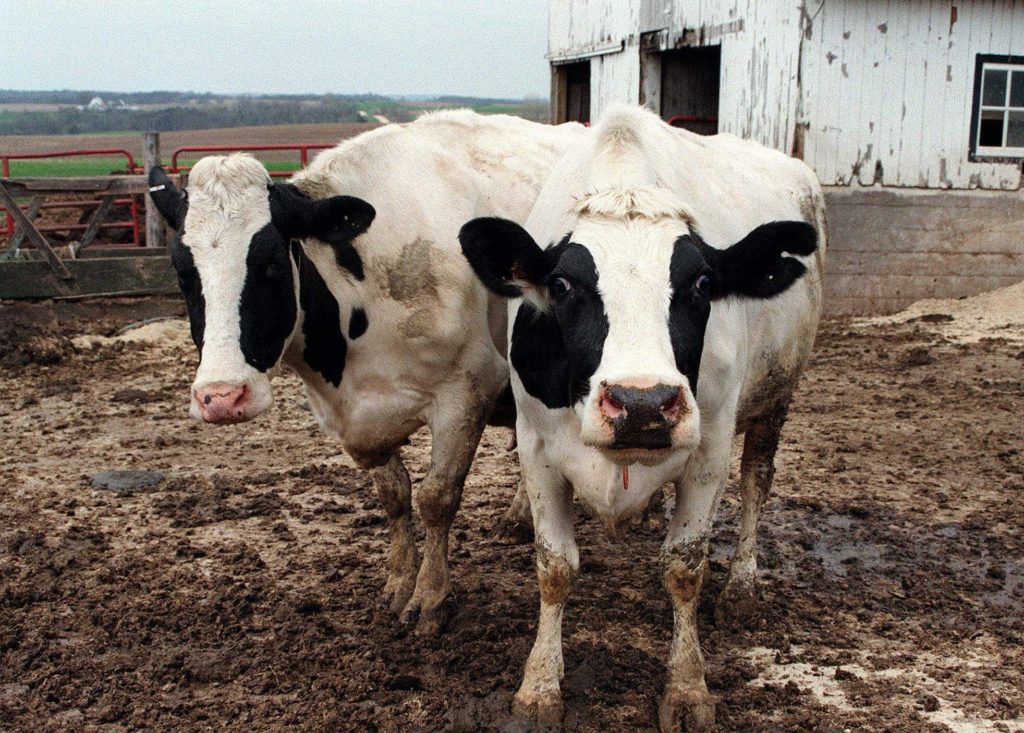Hoping to bolster dairy farmers once again facing steep price declines, the U.S. Department of Agriculture announced it will spend $20 million to purchase 11 million pounds of cheese.
The deal was much smaller than the $50 million requested by the American Farm Bureau Federation, or the $100 to $150 million requested by the National Milk Producers Federation, but that didn’t stop anti-tax groups from speaking out.
“It’s yet another example of USDA caving to demands of an agricultural special interest wanting taxpayers to foot the bill for lower-than-desired prices,” Joshua Sewell, senior policy analyst for Taxpayers for Common Sense, said.
 But the reality is that not all American dairy farmers have done this to themselves, and $20 million isn’t enough to stave off continued culling of family dairy farms. In the past year more than 12,000 across the country stopped milking, no longer able to weather a relatively new global business where production costs often exceed sale prices.
But the reality is that not all American dairy farmers have done this to themselves, and $20 million isn’t enough to stave off continued culling of family dairy farms. In the past year more than 12,000 across the country stopped milking, no longer able to weather a relatively new global business where production costs often exceed sale prices.
“This commodity purchase is part of a robust, comprehensive safety net that will help reduce a cheese surplus at a 30-year high while, at the same time, moving a high-protein food to the tables of those most in need,” Agriculture Secretary Tom Vilsack said, noting the cheese will be distributed through food pantries.
USDA’s purchase removes the equivalent of about 110 million pounds of milk from the domestic commercial market. While exact figures aren’t yet available, I’m estimating, based on the Milk Producers’ figures to the USDA, the buy will strengthen farm-level prices about 3 cents per hundredweight over the course of a year, or push about $42 million into the hands of dairy farmers.
As Vilsack said this will help only “a bit.” It won’t be enough to bolster most smaller dairy farmers, who have been receiving $14.50 per hundredweight nationally, or about $1.25 per gallon. That’s the lowest price they’ve seen since Oct. 2009, and the lowest point yet of the latest price decline.
Farmers with cash reserves have already dipped into them. Those without have probably already stunted or shuttered their operations. Either way, the latest USDA purchase comes too late to make much of a difference in this crisis. But, there will be a next time.
After a half century marked predominantly by protected markets and government subsidies, the nation’s largest dairy producers began widely embracing the global free market about 12 years ago. It’s a new world, full of opportunity, but also much greater risks.
Slow growth in China, the end of European production caps, fickle Russian trade sanctions and excellent New Zealand production all impact American dairies, regardless of market. For more than a year these global happenings, combined with slow adoption of a 2014 Farm Bill safety net production margin, have led to steadily declining milk prices and more struggles for small- and mid-sized producers, many of whom have never sold directly on a global scale.
This cheesy bailout is mostly about goodwill, a show of faith in an election year that the government knows American dairy farmers are still waiting and financially hurting while their new, expanded global markets stabilize.
This column by Lynda Waddington originally published in The Gazette on August 27, 2016.
